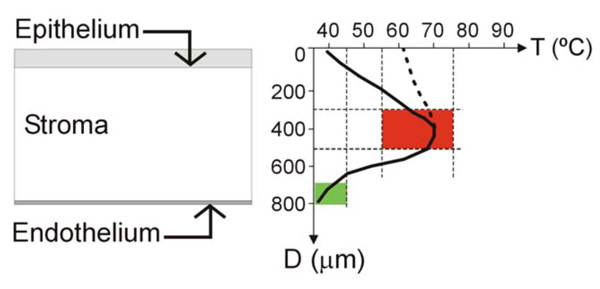Fig. (1) Left: Schematic diagram of the cornea showing the anterior layer (epithelium), the posterior layer (endothelium), separated by the stroma. The aim of the thermokeratoplasty (TKP) procedure is to create safe localized heating in the central stroma. Right: Optimum (solid line) and sub optimum (dotted line) thermal profiles in the cornea for themokeratoplasty (TKP). TKP techniques are a complex challenge from the engineering point of view, due to requiring: 1) an extremely high spatial resolution (i.e. it is necessary to create very localized heating in a precise location of the central stroma –red zone–, thermally protecting the endothelium –green zone–, which is placed no more than 300 μm distant from central stroma); and 2) a high resolution of the temperature reached at the target point (temperatures ranging from 58 to 76°C are required to shrink the collagen, and temperatures over 79°C are harmful). Since the epithelium is a layer with regeneration capability, it can stand heating during TKP(dotted line). However, in the optimum TKP technique the epithelium should be kept cool (solid line) and the heat focused on the central stroma.


